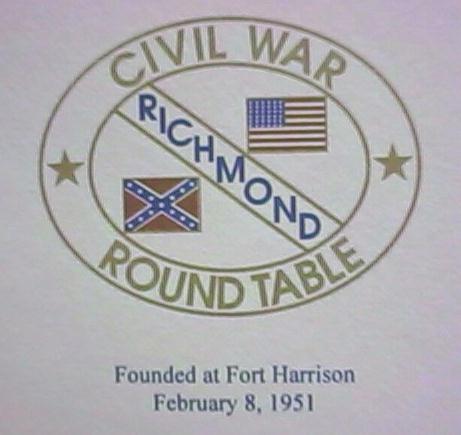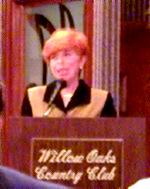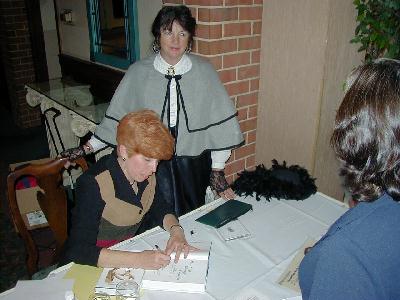


December 2001
Sam Craghead, President Art & Carol Bergeron, Editors 4361F Lakefield Mews 3901 Paces Ferry Road Richmond, VA 23231 Chester, VA 23831-1239 December 2001 PROGRAM Dr. John M. Coski "Battle Flag: A Brief History of America's Most Controversial Symbol" 8:00 p.m., Tuesday, December 11, 2001, at the Boulevard United Methodist Church, 321 N. Boulevard, Richmond, VA (corner of Boulevard and Stuart Ave.) Dr. John M. Coski is the Director of the Library and Research at the Museum of the Confederacy. He has held this position since 1999. Coski received his bachelor's degree from Mary Washington College and his master's and doctoral degrees in American history from the College of William and Mary. After teaching at Mary Washington College and Hollins College, Coski became Historian for the Museum of the Confederacy in 1990. He is the author of Capital Navy: The Men, Ships and Operations of the James River Squadron (1996); A Century of Collecting: The History of the Museum of the Confederacy (1996); and The Army of the Potomac at Berkeley Plantation: The Harrison's Landing Occupation of 1862 (1989). Coski is the co-author or co-editor of White House of the Confederacy: An Illustrated History (1993) and Four Centuries of the Southern Experience: Charles City County from the Earliest Settlement through the Modern Civil Rights Movement (1989). He is working on a book titled Embattled Emblem: The Confederate Battle Flag in American History and Culture. Coski has also had articles and book reviews published in a number of scholarly journals and compiled works. In addition to his work at the Museum of the Confederacy, he has been a consultant for the Ball's Bluff Battlefield Park and an instructor for Elderhostels at Camp Hanover and Virginia Commonwealth University. Coski is one of the leading experts in the country on Confederate flags. His presentation for the Round Table will focus on his work on the Confederate battle flag and will be accompanied by slides.
Review of the November Program
 |
 |
Announcements
Round Table Raffle The December raffle item is a nicely bound 2-volume set of The Long Arm of Lee by Jennings C. Wise.
Christmas Programs Pamplin Historical Park near Petersburg will host a series of Christmas programs during the month of December. The "Holiday Celebration" activities include Christmas traditions as observed by Civil War soldiers and civilians, Christmas music of the 1800s, and a visit from the Civil War era Santa Claus. These family activities will be both fun and educational and should appeal to all ages and levels of interest. On December 15, the program will be "Civil War Santa." The Santa Claus of the 1860s was quite different in appearance from the one of today. Illustrator Thomas Nast popularized this type of character through drawings that appeared in periodicals throughout the century. The Civil War era Santa will appear live at Pamplin Historical Park and will pose for photos with guests. The December 22 program is "Christmas Music." Visitors are invited to hear the music Americans of the 1860s enjoyed during the holiday season. The presentations will be performed live in historic settings. The park will be open from 9am to 5pm for these programs. For more information, call Pamplin Historical Park at (804) 861-2408 or visit the park's Web site at: http://www.pamplinpark.org
Christmas Open House Court End Christmas will be held on December 16 from 12:00-5:00 p.m. Come celebrate the holiday season in the historic Court End with three of Richmond's finest historic homes and museums: The John Marshall House, Wickham House, Valentine Richmond History Center and the Museum and White House of the Confederacy. Each site will offer free admission, house tours and refreshments all day. Carriage rides, living history, music, refreshments and children's activities will help you get into the holiday spirit. The Museum of the Confederacy has special events scheduled for its Christmas Open House. Kick off your Christmas season with a bit of good cheer at the Museum. In honor of the holidays, both the Museum and the White House of the Confederacy will be open to the public free of charge. Enjoy period music, living history, children's activities and refreshments. Author and historian Kevin Rawlings will portray a unique Civil War-era Santa Claus and sign copies of his work We Were Marching on Christmas Day. For more information, call (804) 649-1861.
A Confederate Christmas Private Frederick S. Daniel of the First Company Richmond Howitzers recalled a holiday in which his unit tried to celebrate the season: "When in camp on the Rapidan, the fourth detachment decided to have a Christmas cake. So, as a philosopher said he had seen cakes made and would undertake the job, the sugar and flour of the mess were turned over to him to handle, and he proudly set to work over it. All his messmates looked on with envy. The flour and sugar were mixed, the dough scientifically worked up, and then dumped in a big skillet expressly borrowed from the 'Swell First.' Finally the cooking commenced. Two hours passed and the cake began to brown. The day came to a close, and the cake was not done yet. The night wore on, and the cake became brown at bottom as well as on top, and next morning the cakemaker, declaring it had to be a success, said: 'Now, boys, to prove that the cake is all right, I'll run a stick through it and you can see the inside!' But the stick would not go through. Then a nail was tried: the nail broke. The cake was taken out of the skillet and fell on the ground like a big rock. The cook, with all his knowledge of the fine arts, whether through forgetfulness or lack of adequate ingredients, had simply produced, after twenty hours' cookery, a Christmas cake that appeared to require a pound of dynamite to break it up. 'What became of that cake?' 'I think it was fired at the Yankees!'..."
Richmond Civil War Round Table Newsletter Art & Carol Bergeron, Editors 3901 Paces Ferry Road Chester, VA 23831-1239
Return to News Letters Index
Return to main page

©R.C.W.R.T. 2000-2001